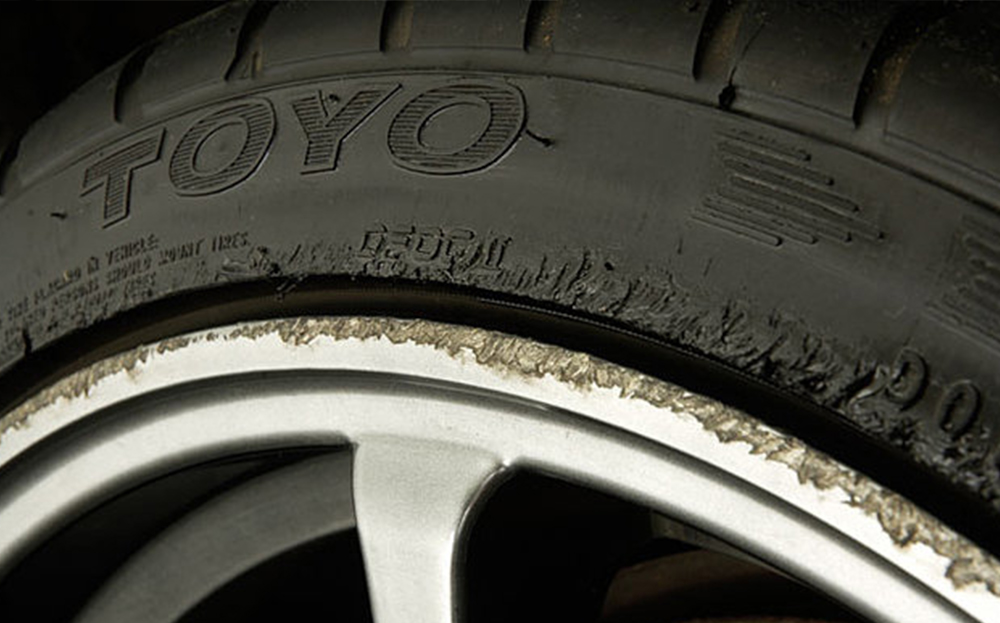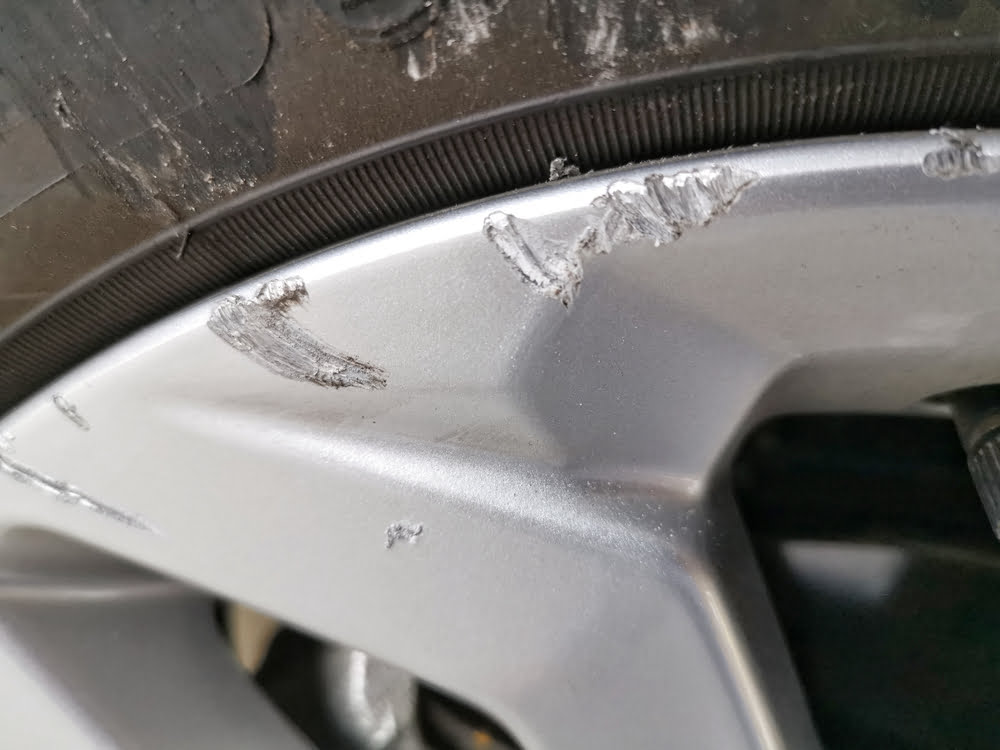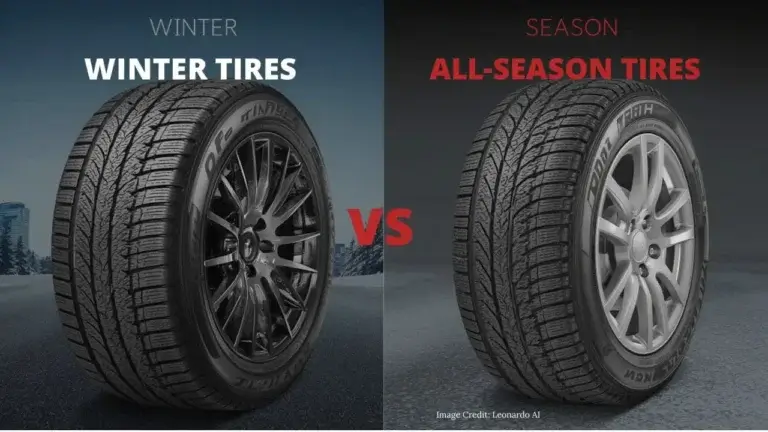Wheel damage refers to the deterioration or harm caused to a vehicle’s wheel. It can affect the rim, spokes, or the wheel structure itself.
Ensuring your vehicle’s wheels are in good condition is crucial for safe driving and maintaining your car’s performance. Damage to wheels can range from cosmetic scratches and dents to severe structural issues that compromise safety. Common causes of wheel damage include potholes, curbs, accidents, and general wear and tear.
Regular inspection helps identify wheel damage early, preventing further damage and potential accidents. Maintaining your wheels not only keeps your car running smoothly but also helps in aligning with safety regulations and avoiding costly repairs down the line.
The Basics Of Wheel Damage
Wheels are crucial for a safe and smooth ride. They can get damaged over time. Wheel damage affects car performance and can be a risk. It is vital to understand wheel types and common damage causes. This knowledge helps in maintaining your wheels better.
Differentiating Wheel Types
Wheels come in different materials and designs. Each type has its own strengths. Steel wheels are hardy but heavy. Alloy wheels are lighter and improve performance. Understanding your wheel type helps you care for them properly.
| Wheel Type | Pros | Cons |
|---|---|---|
| Steel Wheels | Durable, Affordable | Heavy, Less Stylish |
| Alloy Wheels | Lightweight, Aesthetic | More Expensive |
Common Causes Of Wheel Damage
Various factors contribute to wheel damage. Road conditions play a big part. Potholes, kerbs, and debris can cause harm. Driving habits, such as fast cornering or hard braking, also affect wheel condition. Weather elements, including salt and moisture, lead to corrosion and rust.
- Potholes: Cause bending, cracks
- Kerbs: Scratch and chip edges
- Debris: Create surface scrapes
- Corrosion: Weakens wheel over time
Types Of Wheel Damage
When your wheels look good, your car looks good. But what happens when they don’t? Wheel damage can vary from minor cosmetic issues to major safety concerns. Let’s explore the common types of wheel damage, so you can keep your car both safe and stylish!
Cosmetic Scratches And Scuffs
Even a careful driver can end up with scratched or scuffed wheels. These surface blemishes are usually from curbs or debris. Though they don’t affect safety, they can spoil your wheel’s look.
- Light Scuffs
- Paint Scrapes
- Clear Coat Damage
Structural Damage To Rims
Dents and cracks in rims mean structural damage. These can be caused by potholes or accidents. They not only look bad but can also lead to tire damage or air loss. Make sure to get these checked immediately.
- Rim Dents
- Cracks
- Deep Gouges
Bent Wheels And Impact Damage
Hard hits can bend your wheels. This damage is more than skin deep. Bent wheels can make your car vibrate or handle poorly. If you notice a wobbly ride, it’s a sign to have your wheels examined.
- Bent Rim Edges
- Impact-Induced Warping
- Wheel Vibrations
Assessing The Severity
Understanding the severity of wheel damage is crucial for your safety and your wallet. Car wheels take a beating from potholes, curbs, and debris. Not all damage is the same. Some might be cosmetic, but other types can put your car’s performance at risk. It is important to assess the extent of the damage for proper wheel care. Recognizing the type of damage helps determine the urgency and method of repair.
Surface-level Damage
First signs of wheel damage often show on the surface. Small scratches and scuffs are common. They are usually harmless. They might not look good but your wheels are safe. You can fix these issues easily with a DIY kit or at a local shop.
- Scuffs: Scrapes from curbs or stones.
- Gouges: Deeper marks from sharper impacts.
- Discoloration: Caused by chemicals or brake dust.
- Corrosion: Rust or oxidation from water and salts.
These problems do not affect how the wheel spins. But if ignored, they may get worse. Regular washes and wax can prevent them from happening.
Damage Affecting Wheel Integrity
More serious issues compromise wheel integrity. This damage needs immediate attention. It can make driving unsafe. Wheels with integrity issues can lead to accidents. Get a professional to check these issues straight away.
| Type of Damage | Effects | Action Required |
|---|---|---|
| Bent Rim | Causes vibration and uneven tire wear. | May need wheel straightening or replacement. |
| Cracked Wheel | Potential tire deflation or blow-out. | Requires immediate replacement. |
| Broken Spokes | Weakens wheel structure. | Urgent repair or replacement needed. |
| Warped Wheel | Impairs steering and performance. | Inspect for possible repair or replace. |
Any sign of these must be checked by a technician. Delay can lead to bigger problems. Fix wheel damage to ensure a smooth and safe drive.
Factors Leading To Wheel Damage
Wheel damage can happen to any vehicle, at any time. It’s crucial to know what causes it. Understanding these factors helps keep wheels in top shape. Let’s explore some common culprits.
Poor Road Conditions
Poor road conditions are a leading cause of wheel damage. This includes:
- Potholes: Sudden impacts can dent or crack wheels.
- Road debris: Sharp objects can scratch or gouge the wheel surface.
- Uneven pavements: These can cause alignment issues or physical wheel damage.
Accidents And Collisions
Wheels often take a hit in accidents and collisions. The impact can cause:
- Bent wheel rims
- Cracked wheel surfaces
- Damage to the wheel structure
Manufacturing Defects
Sometimes, manufacturing defects lead to wheel damage. This may include:
| Defect Type | Potential Issues |
|---|---|
| Material flaws | Weakness in the wheel that can lead to cracks or breaks. |
| Design errors | Could result in structural failures under normal driving conditions. |
Improper Wheel Maintenance
Ignoring wheel maintenance spells trouble. Risks include:
- Corrosion: Rust or oxidation can weaken wheels over time.
- Tire pressure neglect: Incorrect pressure can stress the wheels and lead to damage.
- Missing maintenance: Failing to rotate tires or check wheel balance can cause uneven wear or damage.
Symptoms Of Damaged Wheels
Imagine a bike with a wobbly wheel. It’s tough to ride, right? Well, cars feel that too when their wheels are hurt. It’s not just about looks. Bad wheels can make a car feel sick. So, it’s smart to know the signs that a wheel needs help.
Vibrations While Driving
Feeling shaky on the road is a big clue that wheels might be damaged. This shaking starts small but can get worse fast. Here’s what to look out for:
- A steering wheel that dances in your hands
- Seats that hum or move when you drive
- The whole car might join in the shaky party
Air Pressure Loss
Wheels should keep their air like a balloon keeps birthday air.
If your tire is sighing out air too fast, you might have a wheel problem.
Checking for leaks often saves a big headache later. And don’t forget:
- Eye on that tire pressure gauge
- Look for sneaky nails or cuts
Uneven Tire Wear
Good shoes wear out evenly. So should tires.
| Part of Tire | What to Look For |
|---|---|
| Edges | Bald spots |
| Center | Smooth strips |
| Sides | Patterns of wear and tear |
Wheel damage can cause tires to wear out funny. Bald spots or weird patterns mean trouble.
Consequences Of Ignoring Wheel Damage
Introduction to the ‘Consequences of Ignoring Wheel Damage’
Ignoring wheel damage might seem minor, but it leads to serious consequences. Regular checks can prevent the risks and potential costs associated with neglected wheel damage. Let’s dive into why it’s crucial to address these issues promptly.
H3 Heading: Safety Risks
Safety Risks
Compromised wheels put everyone at risk. Here are the key safety concerns:
- Loss of control: Damaged wheels impact handling.
- Tire blowouts: Uneven surfaces cause tire stress.
- Brake failure: Warped wheels affect brake alignment.
H3 Heading: Increased Repair Costs
Increased Repair Costs
Small issues grow over time, leading to hefty repair bills. Delaying repairs often means:
- Larger wheel repairs: Cracks can lead to wheel replacement.
- Additional component damage: Impacts on axles and suspension.
- Increased tire wear: Replacing tires more often.
H3 Heading: Reduced Vehicle Performance
Reduced Vehicle Performance
Neglected wheel damage affects overall performance. Fuel efficiency drops and the drive becomes less smooth. Here’s how performance dips:
- Alignment problems: Poor wheel alignment affects handling.
- Uneven tire wear: Leads to vibrations and instability.
- Compromised acceleration: Strain on the engine due to imbalance.
Diy Vs. Professional Repair
Facing wheel damage can be a real headache for any car owner. Scratches, bends, and even cracks can turn a smooth drive into a bumpy one. Choosing between DIY or a professional repair depends on the issue’s complexity. Let’s dive into understanding when to grab your toolbox and when to dial a pro.
When To Attempt Diy
DIY repair is a go-to for minor fixes. Simple scratches or small dents fall under this. Your car doesn’t need advanced tools or skills in these cases. Check out this list of DIY-friendly wheel damage:
- Superficial Scratches
- Minor Paint Chips
- Small Dents without Structural Harm
Follow these simple steps:
- Clean the area
- Apply filler if needed
- Use color-matched paint
- Seal with clear coat
Remember, always follow the product instructions for the best results.
When To Seek Professional Help
Some wheel damages require expert attention. This is the safest option for major concerns. Check the table below to know when to call a professional:
| Type of Damage | Reason for Professional Repair |
|---|---|
| Bent Wheel | Affects driving safety |
| Cracked Wheel | Risk of wheel failure |
| Extensive Corrosion | Compromised wheel integrity |
Professionals use specialized equipment and techniques. They ensure a repair that lasts. Peace of mind comes with professional service, especially when safety is on the line.

What is Wheel Damage?
Credit: www.driving.co.uk Click Here
Preventing Wheel Damage
Preserving the condition of a car’s wheels is crucial for a smooth and safe driving experience. Wheel damage can range from cosmetic scratches to serious issues that affect your vehicle’s performance. To ensure wheels remain in top shape, follow these effective strategies.
Routine Maintenance
Regular wheel upkeep is essential in preventing damage. Tasks include:
- Cleaning – Remove brake dust and road grime.
- Inspection – Check for bends, cracks, or signs of wear.
- Air pressure checks – Maintain proper tire inflation.
- Balancing – Ensure wheels spin without causing vibrations.
- Alignment – Correct wheel angles as needed.
These tasks prevent long-term damage and keep you safe on the road.
Defensive Driving Techniques
Adopting safe driving habits protects wheels from unexpected hazards. Focus on:
- Avoiding potholes – Steer clear of road imperfections.
- Watching for debris – Stay vigilant for obstacles.
- Slowing down – Reduce speed on rough terrain.
- Gentle maneuvering – Take turns and curves with care.
Defensive driving minimizes the risk of damaging impacts on your wheels.
Choosing Quality Wheels And Tires
Invest in high-quality wheels and tires for better protection. Consider the following:
| Factor | Importance |
|---|---|
| Material | Durable materials resist common damages. |
| Design | Sturdy designs offer enhanced protection. |
| Tire Rating | Higher ratings ensure longer-lasting tires. |
| Warranty | Covers replacements or repairs if needed. |
Quality selections promote longevity and reduce the need for frequent repairs.
What is Wheel Damage?
Insurance And Wheel Damage
Wheel damage can be a common yet frustrating issue for vehicle owners. From potholes and curbs to debris and accidents, the reasons wheels can suffer harm are many. Understanding how insurance policies cover such damage is crucial. It ensures quick and effective solutions without draining your wallet.
Coverage For Wheel Repairs
Auto insurance varies widely among providers and policies. Comprehensive and collision coverage are the usual suspects when it comes to wheel repairs. These coverages protect against different scenarios:
- Comprehensive coverage usually takes care of damages from theft, vandalism, or natural events.
- Collision coverage steps in when your wheels are damaged due to an accident with another vehicle or object.
Some policies may require you to purchase additional coverage for custom parts, which can include aftermarket wheels. Always review your policy details or speak with your agent to understand your coverage limits.
Filing A Claim For Wheel Damage
Filing a claim for wheel damage can be a straightforward process.
- First, document the damage clearly with photos and notes.
- Next, contact your insurance provider to report the incident.
- Ensure to have your policy number ready for a smoother process.
- Your insurance may require you to visit an approved repair shop to get an estimate.
Keep receipts and any related paperwork. They will be crucial when providing proof of the damage. Remember, prompt reporting can often result in faster claim approvals and repairs.

What is Wheel Damage?
Credit: www.alloywheelsdirect.net Click Here
Innovations In Wheel Durability
Wheels keep our journeys smooth, but they can get damaged. Let’s look at how new tech makes wheels last longer. With better materials and designs, our wheels are getting tougher every day.
New Materials In Wheel Manufacturing
Tradition meets innovation as revolutionary materials strengthen our wheels. From high-tech alloys to carbon fiber, wheels are not just about steel anymore. These materials resist rust and can take big hits without cracking.
- Aluminum Alloys: Light and strong, perfect for performance.
- Carbon Fiber: Super light, super tough, used in racing wheels.
- Magnesium Alloys: Even lighter than aluminum, with great impact resistance.
Advancements In Wheel Design
The shape and structure of wheels just got smarter. With cutting-edge computer simulations, engineers test wheels under extreme conditions before they hit the road. This means fewer cracks and bent rims.
Some creative designs include:
| Design Feature | Benefits |
|---|---|
| Aerodynamic Spokes | Reduce drag, save fuel. |
| Flow-Formed Rims | Balance strength and weight. |
| Integrated Sensors | Monitor pressure, prevent damage. |
Thanks to these advancements, wheels are not just round. They are smarter, stronger, and ready for future roads.

Credit: www.autocosmetics.org
Conclusion
Understanding wheel damage is crucial for vehicle maintenance and safety. Regular inspections can prevent costly repairs and ensure a smooth ride. Address issues early and consult professionals if in doubt. Drive with confidence knowing your wheels are in top shape.
Safe travels!




